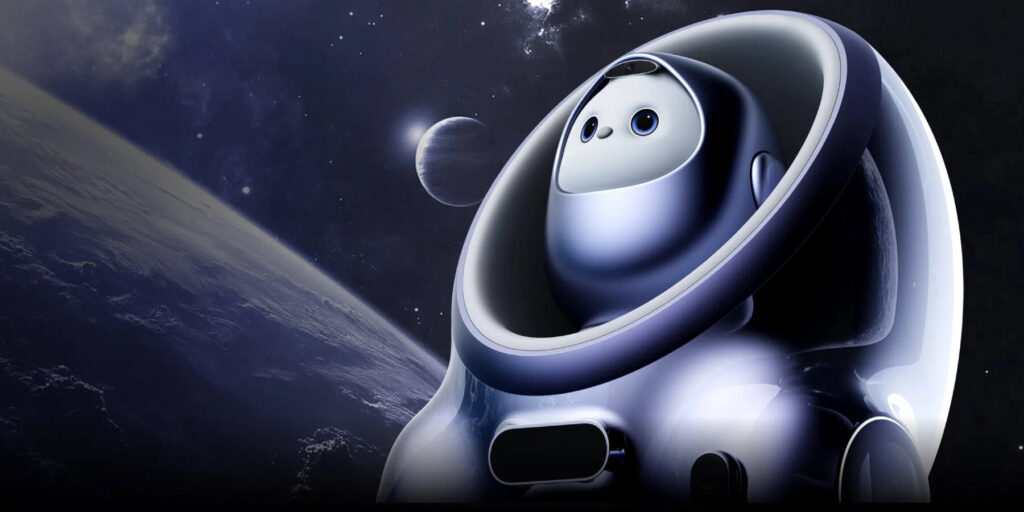In 2024, artificial intelligence technology surged like a powerful wave, radically transforming how people live and work across the globe. From voice assistants on smartphones to the intelligent core of humanoid robots, AI’s omnipresence was undeniable.
This year marked an unprecedented integration of AI with terminal devices, greatly enhancing everything from smartphones and computers to wearable devices, toys, and educational tools. At this pivotal point in the development of artificial intelligence, its momentum continued to build, driving a new wave of advanced, highly capable products and altering the fundamental dynamics of numerous industries.

Source: Internet
Throughout 2024, the AI terminal market exhibited a powerful “triadic dominance,” with smartphones, PCs, and wearables leading the charge, alongside burgeoning sectors like automotive information systems, smart home devices, and AI toys.
AI terminals, as a crucial component of the artificial intelligence tech framework, represent electronic devices that incorporate AI technology to perform complex tasks locally, offering intelligent services and interactions. These are more than mere upgrades of traditional devices; they embody advanced hardware architectures, efficient algorithms, and smart software systems. Among these, smartphones—pervasive in daily life—serve as a significant platform for AI applications.
Common smartphone AI features focus primarily on imaging, virtual assistants, and translation. In daily life, AI imaging provides smart photography capabilities, automatically adjusting settings based on scene recognition to enhance photo quality. Virtual assistants can accurately interpret user voice commands and respond promptly.
The hallmark of AI assistants is sophisticated interaction, leveraging technologies like voice recognition, image recognition, and natural language processing to revolutionize human-computer interaction. Users can interact with their smartphones beyond mere text commands, employing assistants like Apple’s Siri to perform tasks via simple voice instructions, such as checking the weather or playing music.
In 2024, the market for AI-driven smartphones expanded significantly. According to Gartner, AI smartphone shipments saw notable growth, with expectations of increased market penetration. Counterpoint projects that AI-enabled phones will comprise 11% of all shipments in 2024, rising to 43% by 2027, signaling their transition into mainstream devices.
PCs, meanwhile, remain indispensable for office and creative work, further bolstered by AI integrations. Due to size and power consumption constraints, smartphone processors often lag behind PCs in handling complex AI tasks, such as training deep neural networks or processing large documents. PCs boast more powerful processors, including high-performance CPUs and GPUs, or even NPUs, facilitating complex operations like running large language models for text generation or software development.
 Source: Internet
Source: Internet
Aside from PCs, the wearable AI device sector saw substantial growth in 2024, ushering in a variety of cutting-edge products with AI features competing effectively with smartphones and PCs. AI glasses emerged as a standout product, drawing intense interest from tech giants like Meta and Apple, as well as LAWK, Thunderbird Innovation, and XREAL, intensifying market competition with innovations in technology, features, and pricing.
AI+AR glasses with integrated displays, AI audio glasses, and AI photo glasses are just some variants on the market. Many AI glasses manufacturers have launched their spatial operating systems, such as Rokid’s YodaOS-Master and XREAL’s nebulaOS, establishing comprehensive spatial computing frameworks that support multitasking, barehand interaction, and visual positioning for a seamless integration of virtual and reality.

Beyond AI glasses, other wearable AI forms such as AI Pins, AI smart rings, and voice-interactive AI pendants gained traction in 2024. Additionally, traditional wearables like headsets, watches, and bands morphed into new categories by adopting AI functionalities.
AI toys also made a significant splash, particularly at CES 2025, solidifying their place as pivotal AI terminals. This category spans plush toys, accessories, educational toys, and pet simulators, targeting demographics such as young women, the elderly, and children. Products like Casio’s Moflin, an AI pet resembling a fluffy hamster, have gained popularity for their emotional capabilities and responsive behavior, selling out quickly since their November 2024 launch.
 Source: Internet
Source: Internet
Ropet, a CES 2025 newcomer, showcases similar features, incorporating sensors to detect human touch and emotion. Expansion into AI caretakers could see toys evolve into household robots, performing broader duties beyond companionship.
Despite advancements, not all companies share the same playing field. Large tech firms have leveraged their expertise and resources to dominate in AI hardware and software development, whereas smaller companies face challenges due to funding constraints and supply chain limitations. Consequently, smaller firms pivot to niche markets, crafting innovative products like AI Pin and toy-focused AI devices.
The technological landscape is evolving, with increased edge computing capabilities and hardware advancements enhancing performance. AI technology drives terminals toward becoming intelligent entities, enabling complex interactions and situational awareness. Smartphone AI systems, for example, now offer intuitive personal assistant services, transcending traditional functionalities by supporting cross-application operations.
Market trends indicate a deepening integration of AI into daily life, from smart home appliances and autonomous vehicles to personalized leisure experiences in entertainment settings. The future of AI terminals looks promising as they become more personalized and adept at serving specific human needs, enhancing applications through improved security measures and privacy protection technologies.
The year 2024 heralded transformational changes, embedding AI deeply within terminal devices across various forms and sectors. As the technology continues to evolve, it promises to redefine the way we experience our lives, intertwining with other cutting-edge advancements to shape a future that surpasses our wildest imaginations.


